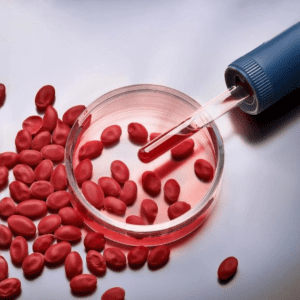Lithium has long been the gold standard treatment for bipolar disorder, but there’s still much to learn about how it works in the body and brain. A recent systematic review by researchers at the University of Paris aimed to summarise what we know about measuring lithium levels in red blood cells compared to plasma. Their findings shed light on the complexities of lithium treatment and point to areas needing further study.
What were the researchers trying to achieve?
The research team wanted to get a comprehensive picture of how measuring lithium in red blood cells might be useful for managing treatment in people with bipolar disorder and other mood disorders. They were particularly interested in whether red blood cell lithium levels could predict how well someone would respond to treatment or their risk of side effects better than standard plasma measurements.
What did they find?
After reviewing over 50 studies spanning several decades, the researchers found mixed and often conflicting results. Here are some key takeaways:
- Side effects: There’s some evidence that red blood cell lithium levels may better predict certain neurological side effects than plasma levels. However, the overall picture remains unclear.
- Treatment response: Despite some positive findings, most studies didn’t show that red blood cell measurements were clearly superior to plasma levels in predicting how well someone would respond to lithium.
- Diagnosis and mood states: Red blood cell lithium levels don’t seem to reliably distinguish between different mood disorders or predict current mood states.
- Genetic factors: Interestingly, some studies found that people with a family history of mood disorders tend to have higher lithium levels in their red blood cells. This hints at potential genetic influences on how our bodies process lithium.
What does this mean for you?
If you’re taking lithium or considering it as a treatment option, this research highlights the complexity of finding the right dose and monitoring treatment. While measuring lithium in red blood cells isn’t routinely done, it may become more common in the future as we learn more.
The most important takeaway is that lithium treatment requires careful, personalised monitoring. Regular check-ups and open communication with your healthcare provider are crucial for finding the right balance between effectiveness and side effects.
This review also reminds us that there’s still much to learn about how lithium works in the body and brain. As research continues, we may develop better ways to predict who will respond best to lithium and how to minimise side effects. For now, lithium remains a valuable tool in treating bipolar disorder, but one that requires careful management and ongoing research to optimise its use.
Coyac, M., Jalabert, L., Declèves, X., Etain, B., & Bellivier, F. (2024). Relevance of red blood cell Lithium concentration in the management of Lithium-treated bipolar and unipolar disorders: a systematic narrative review. International Journal of Bipolar Disorders, 12(1), 35. https://doi.org/10.1186/s40345-024-00356-5
